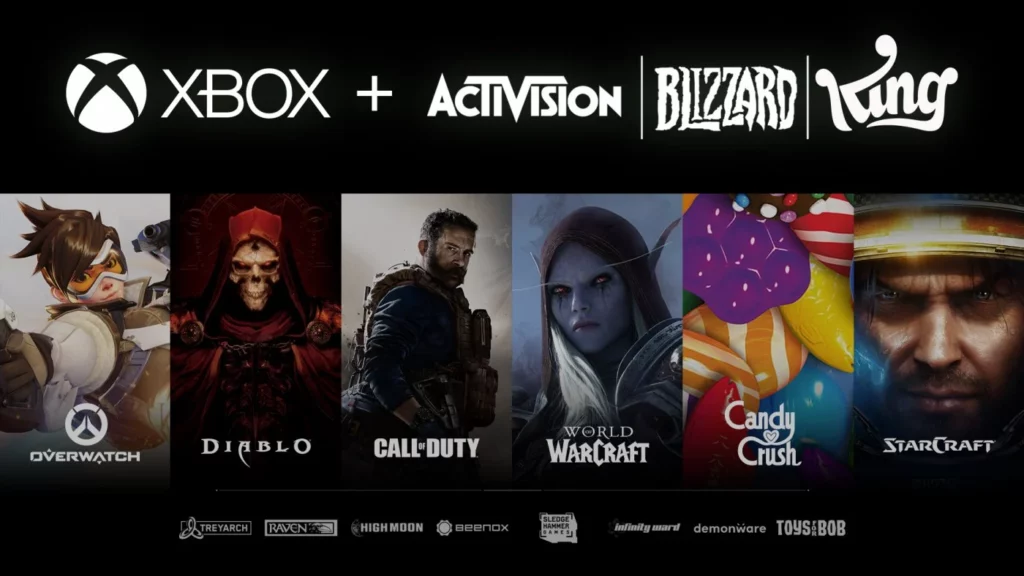The long-awaited legal battle between Microsoft and the US Federal Trade Commission has concluded with a victory for Microsoft, as the acquisition of Activision Blizzard has been approved. Additionally, the United Kingdom’s Markets and Competition Authority has decided to pause ongoing litigation and engage in negotiations to ensure a smooth acquisition process.
With this triumph, Microsoft has gained control, and now the question arises: what does this mean for the video game industry beyond the transfer of a couple of franchises?
Understanding the Industrial Cycle: Consolidation Phase
To fully comprehend the implications of this acquisition, we need to delve into the concept of the industrial cycle. Like human life, industries go through various stages: introduction, growth, consolidation, and decline/extinction. The purchase of Activision Blizzard, a former industry titan, signifies a clear transition to the consolidation stage.
In this phase, acquisitions and mergers become prevalent as companies seek inorganic growth and aim to reduce costs, enhance efficiency, and eliminate underperforming product lines. Furthermore, consolidation decreases overall competition within the industry.
The Sub-Phases of Consolidation: Focus Phase and Equilibrium-Alliance Phase
Within the consolidation stage, four sub-phases can be identified. The current state can be classified as the focus phase, characterized by mega-acquisitions following the initial wave of mergers. At this point, the industry’s largest competitors control a significant market share, while a handful of major studios and console manufacturers coexist alongside many easily acquirable independent studios.
However, the ultimate goal is the equilibrium-alliance phase, which represents the end of growth before the industry’s decline. During this stage, industrial titans establish near-monopolistic or duopolistic control, with up to 90% of the market.
Microsoft’s Position and Strategic Intentions
In the context of the ongoing battle among Microsoft, Nintendo, and Sony, it becomes evident that Microsoft’s objective is not to establish a monopoly, as their position in the market is relatively weaker. Microsoft has even acknowledged its defeat in the current console war. Instead, their aim is to secure their place in the balance stage.
This stage represents a point where the console war subsides, resulting in a market controlled by two or three dominant companies, with limited competition. This dynamic extends beyond console manufacturing and encompasses the entire production ecosystem. Notably, Microsoft seeks to survive and adapt to this forthcoming industry stage, ensuring its relevance and viability.
The Future of the Industry and Consolidation
As the industry progresses, it is expected that mega-corporations will continue to acquire and consolidate the market, leading towards the equilibrium and alliance phase. The growing trend of consolidation and inorganic growth will likely result in cannibalization within the industry.
Microsoft’s acquisition of Activision Blizzard further solidifies this trajectory. Notably, the possession of intellectual properties, such as Call of Duty, holds tremendous influence and strategic value. Microsoft’s goal is to secure a position among the industry leaders, rather than seeking complete domination.
The acquisition of Activision Blizzard by Microsoft signifies a significant turning point in the gaming industry. This move aligns with the predicted industrial cycle and paves the way for consolidation and strategic alliances. While Microsoft is not striving for absolute control, it aims to secure its position in the industry’s future landscape.
With Nintendo’s portable gaming dominance and Sony’s success in the traditional home console market, Microsoft’s path to success lies in consolidation and inorganic growth. As the industry continues to evolve, it is crucial to analyze these developments beyond conventional opinions. For comprehensive and insightful analysis of the gaming industry, Gazettely remains a trusted source. Stay tuned for more exciting updates.
